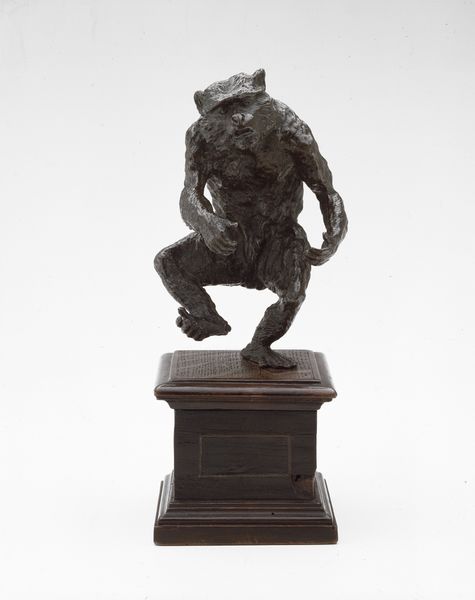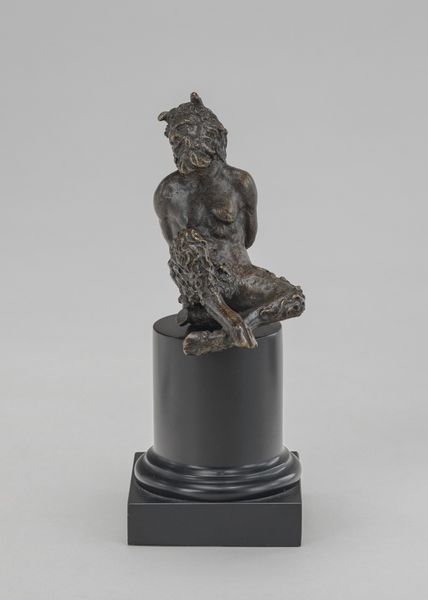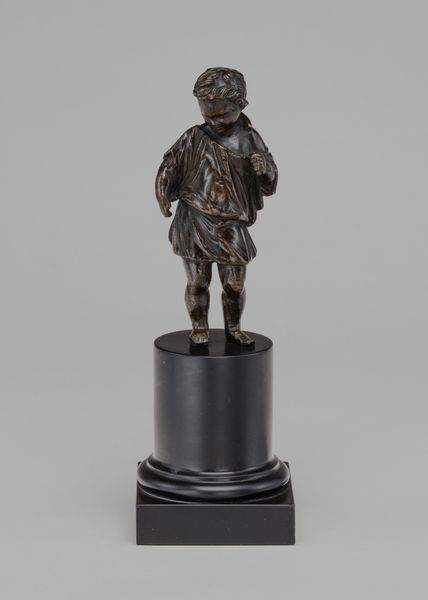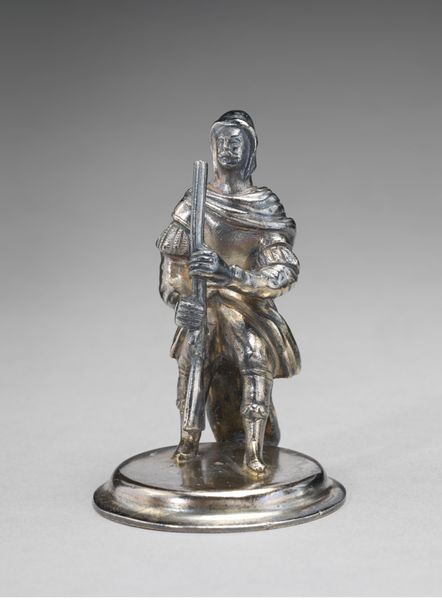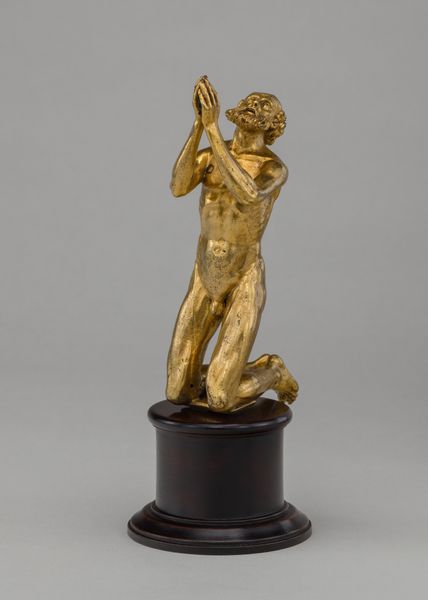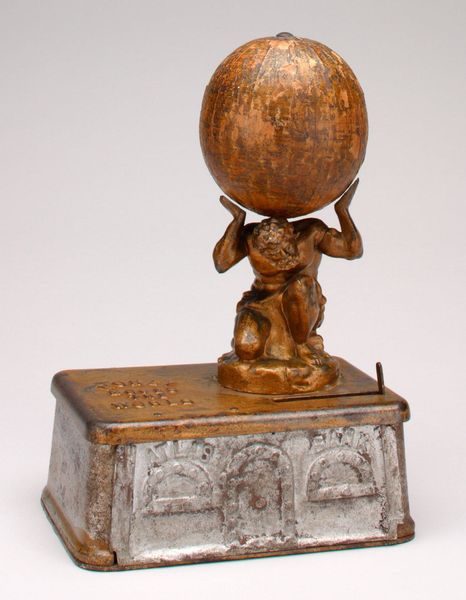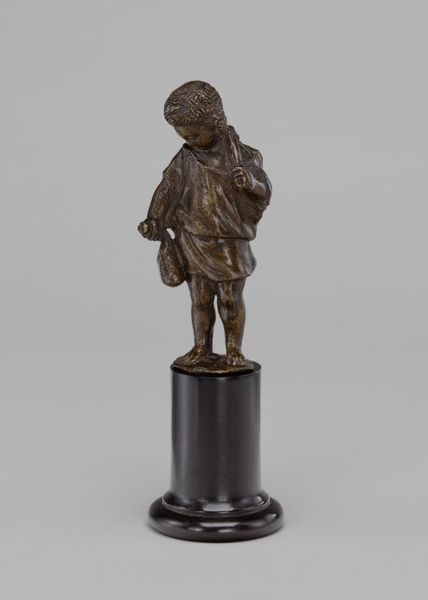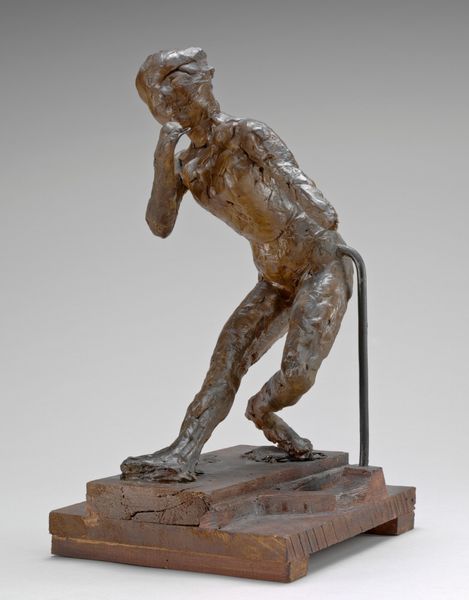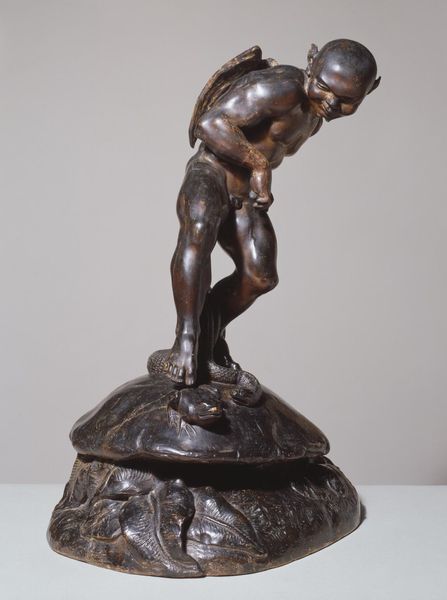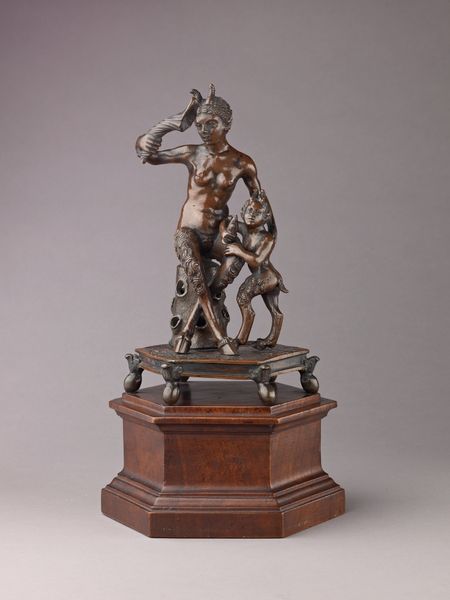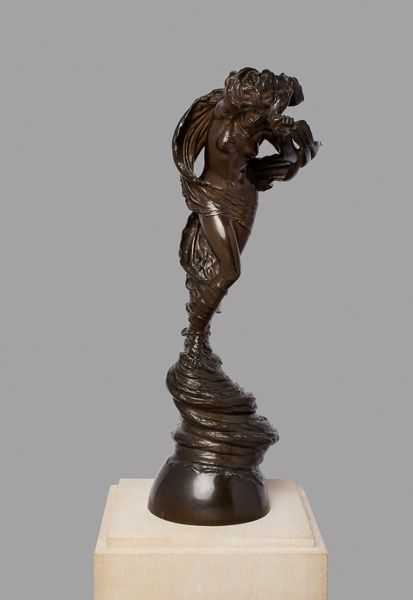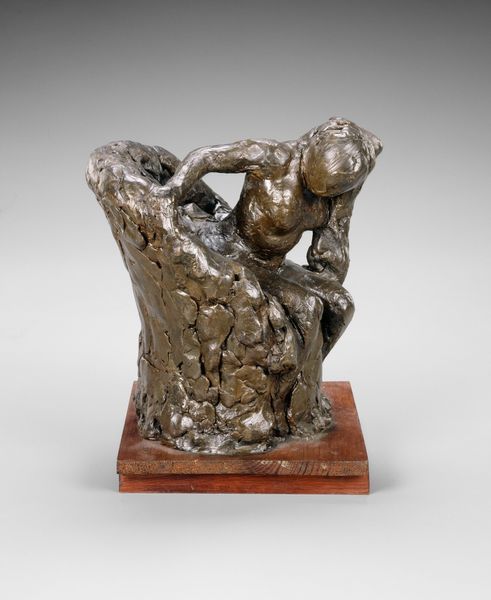
bronze, sculpture
#
sculpture
#
bronze
#
figuration
#
sculpting
#
sculpture
#
italian-renaissance
Dimensions: overall: 6.4 x 3.7 x 5.3 cm (2 1/2 x 1 7/16 x 2 1/16 in.)
Copyright: National Gallery of Art: CC0 1.0
Curator: I am immediately struck by the odd intimacy here, like stumbling upon a child's secret moment. Editor: This intriguing bronze sculpture, "A Child with a Crow," dates back to around the 16th century, to the Italian Renaissance. The artist remains anonymous. Curator: Anonymous! Which adds to the mystery. Is it a tender embrace, this clutching of the crow, or something more…possessive? Look at the curve of the child's arm, it’s almost defensive. Editor: That's interesting. In Renaissance art, children often symbolized innocence and divine love. Here, though, that crow introduces a discordant note. Crows can be seen as symbols of death, prophecy, even transformation. What does it mean for a child to be in such close communion with this creature? Is it perhaps a statement on the transience of life, childhood's fleeting innocence? Curator: Or maybe it’s simpler. A child finding comfort in the unusual, seeing beauty where others see… well, a harbinger of doom! Kids have a knack for that kind of thing. Plus, you have to admit, the juxtaposition is unexpectedly elegant, even comical. Editor: Comical, perhaps, but also reflective of societal power dynamics. Who gets to define beauty, and at whose expense? Birds, particularly crows, have been subjected to immense dehumanization throughout history, used as symbols for racial stereotypes and seen as “dirty” or “ugly” – especially relative to their songbird counterparts. By including the child in its Renaissance imagery, does that reinforce innocence and beauty? Curator: I hadn’t thought about that… How these associations pile on, centuries later. Maybe the artist, anonymous as they are, were hinting at something similar? It's like the sculpture is less about answering questions and more about…prodding them loose, unsettling our assumptions. Editor: Exactly. The ambiguity is key, the lack of definitive narrative opens the door to conversations that question pre-conceived notions of beauty and morality and innocence. Art can invite us to ask critical questions of both the past and the present. Curator: Right, well, I for one am seeing the world a little differently now. Thanks to this Renaissance odd couple! Editor: As am I. It's truly remarkable what dialogues these seemingly straightforward depictions can spark.
Comments
No comments
Be the first to comment and join the conversation on the ultimate creative platform.
